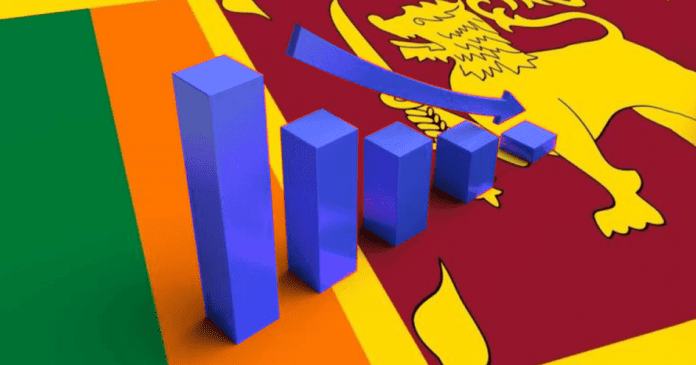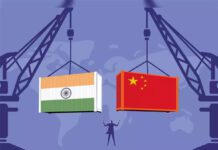Introduction
1. Economic Landscape: A Formidable Task
1.1 Overview of Sri Lanka’s Current Economic Situation
President Wickremesinghe acknowledged the daunting task of economic revival following last year’s bankruptcy, emphasizing that while the country’s situation has improved, a complete recovery is yet to be achieved.
1.2 Ambitious Revenue Targets
Despite falling short of the targeted revenue of LKR 2.8 trillion for 2023, the Budget for 2024 sets an even higher target of LKR 4.1 trillion. This ambitious goal reflects the government’s commitment to overcoming fiscal challenges.
2. Expenditure Priorities: A Balancing Act
2.1 Three Pillars of Expenditure
President Wickremesinghe’s delineation of the government’s expenditure priorities revolves around three essential pillars, each playing a critical role in the fiscal landscape.
1. Public Sector Salaries:
- A substantial portion of the budget is allocated towards the remuneration of public sector employees. This includes wages and salaries for government workers, reflecting the government’s commitment to compensating its workforce adequately.
2. Pensions and Public Welfare:
- The second pillar focuses on providing for pensions and public welfare programs. This encompasses financial support for retired individuals and initiatives aimed at enhancing the well-being of the general public. The emphasis on social welfare aligns with the government’s efforts to create a safety net for vulnerable segments of the population.
3. Payment of Interest on Government Debt:
- The third and perhaps the most significant pillar involves servicing the country’s debt and covering the interest accrued. This highlights the financial responsibility the government bears concerning its outstanding loans and the importance of maintaining fiscal discipline to manage debt obligations effectively.
2.2 Public Sector Worker Hike: A Politically Popular Move
Economist Umesh Moramudali notes that the budget prioritizes stabilizing the economy through revenue-based consolidation while incorporating politically popular proposals, such as the promised hike for public sector workers.
2.3 Concerns Over Social Security and Welfare Programs
The Feminist Collective for Economic Justice expresses concerns over the government’s social security program, pointing out its exclusion of many impoverished individuals. Additionally, the Budget lacks substantive policies or allocations to address critical issues like malnutrition among children and food insecurity.
3. Revenue Challenges and Taxation Dynamics
3.1 High Expectations and Indirect Taxes
The government’s revenue expectations hinge on collecting indirect taxes, a move criticized for potentially increasing the burden on the poor. Niyanthini Kadirgamar from the Feminist Collective highlights the need for careful consideration of the impact on vulnerable segments of the population.
3.2 Growing Poverty Levels and Inflation
The intersection of growing poverty levels and inflation in Sri Lanka represents a critical challenge that demands a nuanced examination of its causes, consequences, and potential solutions.
1. Poverty Dynamics:
- Despite official narratives highlighting a reduction in the rate of inflation, reports from reputable sources such as the World Bank and UN agencies point to a concerning trend of growing poverty levels in Sri Lanka. The discrepancy between inflation rates and the reality faced by the average citizen raises questions about the effectiveness of economic policies in addressing the root causes of poverty.
2. Impact of Inflation on Daily Life:
- President Wickremesinghe concedes that the inability to correspondingly increase salaries and income has created a disconnect with the high cost of living. The increased prices of essential commodities, driven by inflation, have adversely impacted households, making it challenging for citizens to cope with rising expenses for necessities such as food, fuel, and electricity.
3. Utility Bill Challenges:
- The steep increase in tariffs for utilities, particularly electricity, has resulted in heightened struggles for citizens to pay their bills. Reports indicate that the Ceylon Electricity Board has disconnected over 5 lakh connections in the current year due to non-payment of bills. This underscores the tangible consequences of inflation on the daily lives of Sri Lankans, especially those facing economic hardships.
4. Government Response and Concerns:
- While President Wickremesinghe points to a reduced inflation rate, critics argue that this reduction is relative and fails to address the high baseline from the previous year. The government’s response to inflation and poverty levels becomes a focal point for scrutiny, with concerns raised about the adequacy of measures taken to alleviate the economic burden on citizens.
4. Social Concerns: Addressing the Human Impact
4.1 Impact on Daily Life
President Wickremesinghe admits that the severe crisis has led to an inability to correspondingly increase salaries and income to match the rising cost of living. The article explores how the average citizen copes with the challenges, including struggles to pay utility bills and disconnections by the Ceylon Electricity Board.
4.2 Opposition Perspectives
The perspectives from the opposition leaders, Sajith Premadasa and Anura Kumara Dissanayake, shed light on their critical assessments of the 2024 Budget.
1. Leader of Opposition Sajith Premadasa’s Critique:
- Sajith Premadasa categorizes the Budget as a “media circus,” suggesting skepticism or dissatisfaction with the government’s presentation and communication of fiscal policies. His characterization hints at concerns regarding the transparency, clarity, or substantive impact of the budgetary proposals.
2. Anura Kumara Dissanayake’s Assertions:
- Anura Kumara Dissanayake, Leader of the National Peoples Power (NPP), takes a more pointed stance, asserting that the Budget is based on “seeking [more] loans” and “selling state assets.” This critique implies apprehensions about the fiscal sustainability of the government’s approach, suggesting a reliance on external borrowing and potential privatization of state-owned assets.
3. Concerns Over Fiscal Strategy:
- Both critiques converge on concerns related to the government’s fiscal strategy. Sajith Premadasa’s emphasis on the “media circus” implies a lack of substance or meaningful impact, while Anura Kumara Dissanayake’s focus on loans and asset sales questions the financial prudence and long-term consequences of the proposed measures.
4. Potential Impact on Public Perception:
- Opposition perspectives play a crucial role in shaping public opinion. By expressing skepticism about the budgetary proposals, the opposition leaders contribute to a discourse that may influence how citizens perceive the government’s economic policies. If the opposition’s concerns resonate with the public, it could potentially impact political dynamics and public trust.
Conclusion: Charting the Path Ahead
As Sri Lanka navigates the complexities of economic recovery, the 2024 Budget emerges as a crucial roadmap. Balancing expenditure priorities, addressing social concerns, and navigating revenue challenges are paramount. The government’s commitment to ambitious targets, coupled with constructive feedback from economists and activists, will shape the nation’s journey toward stability and growth.










